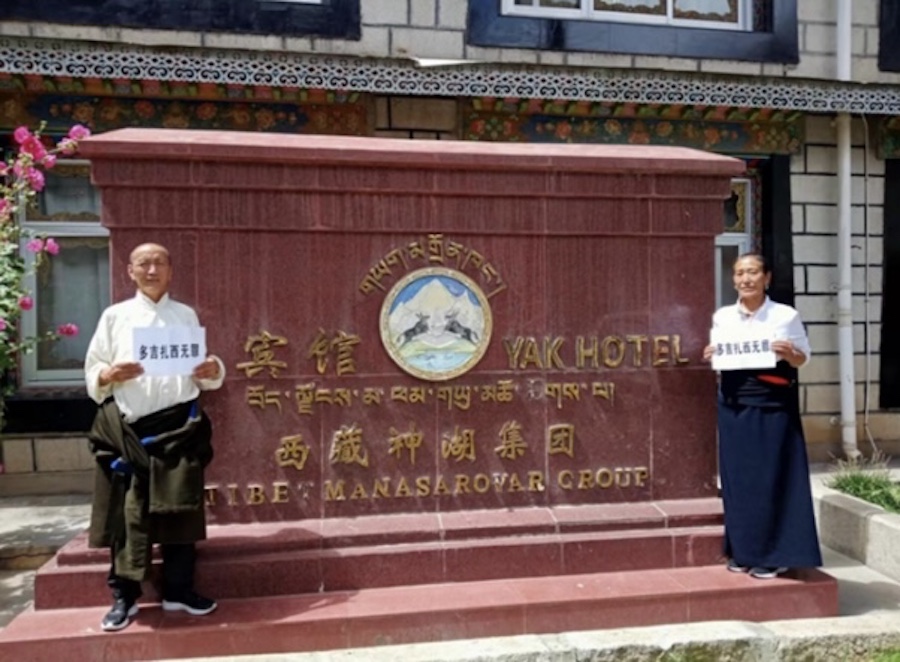By Dorjee Tseten
 February 13, 2013 marked 100 years since His Holiness 13th Dalai Lama proclaimed the restoration of Tibet’s independence following a period of Qing domination. In the last few years, February 13th has been celebrated as Tibetan Independence Day in over 30 cities worldwide. Each year, on this date, Tibetans and their supporters have celebrated various symbols of Tibetan independence: the Tibetan national flag, the 1913 Tibetan Proclamation of Independence, the historical pillar in Lhasa erected to mark a peace treaty between Tibet and China.
February 13, 2013 marked 100 years since His Holiness 13th Dalai Lama proclaimed the restoration of Tibet’s independence following a period of Qing domination. In the last few years, February 13th has been celebrated as Tibetan Independence Day in over 30 cities worldwide. Each year, on this date, Tibetans and their supporters have celebrated various symbols of Tibetan independence: the Tibetan national flag, the 1913 Tibetan Proclamation of Independence, the historical pillar in Lhasa erected to mark a peace treaty between Tibet and China.
This year’s global celebration of this important day is being marked by highlighting the historical importance of the great Potala Palace of Tibet and Tibetan people’s vision for a free and democratic Tibet. Today, China attempts to portray the Potala Palace solely as a tourist attraction. However, for the Tibetan people, the Potala Palace is much more than an attractive monument; it is a representation of Tibet’s independent past and a symbol of Tibet’s future statehood for Tibetans around the globe.
Below are ten interesting facts about this world heritage site known as the Potala Palace:
1. The Potala Palace in Lhasa, the capital city of Tibet, was the chief residence of His Holiness the Dalai Lama. It also served as the seat of the Tibetan Government for hundreds of years, until China’s illegal invasion of Tibet in 1949. So in terms of symbolism, it is like the White House and the Capitol Building combined in one majestic edifice.
2. In the mid-7th century, emperor Songtsen Gampo, the 33rd and greatest king of Tibet, laid down the first foundation of his palace on Marpo Ri, or the Red Hill, in Lhasa. He moved the seat of his government from Yarlung to Lhasa, and transformed Lhasa from a tiny provincial town into the national capital of Tibet. Under Songtsen Gampo’s rule, the Tibetan empire grew to be an Asian military power whose influence stretched far and wide.
3. The construction of the Potala Palace, in the form that exists today, began during the reign of te Fifth Dalai Lama in 1645, around the time when the Mughal emperor, Shah Jahan, was building the Taj Mahal in India.
4. In 1682, at the age of sixty-five, the Fifth Dalai Lama died before completing the construction of the Potala Palace. He had entrusted the responsibility to Sangye Gyatso, the regent, advising the regent to keep his death a secret. Sangye Gyatso carried out the wishes of the Fifth Dalai Lama, keeping his death a secret for around fifteen years until construction was completed.
5. The completed palace was named after Mount Potalaka, a sacred hill in South India believed to be the mythical abode of Avalokiteśvara, also known as Chenresig, or the Buddha of compassion. Tibetans believe the Dalai Lamas to be the human manifestation of Avalokiteshvara.
6. The Potala Palace is the most prominent manifestation of Tibetan architectural genius and its designs are a testament to the builders’ scientific understanding of Tibet’s natural landscape and weather conditions in ancient times. Completed in 1694, Tibetan artisans used clay, timber, and stone to construct it over the course of 50 years. An English correspondent who visited Tibet at the beginning of the 20th century wrote that the Potala Palace was “like flames shining brilliantly under the sun.” He added, “This is not a palace sitting on top of a mountain; it is a mountain of a palace.”
7. The Potala Palace is considered to be the highest-altitude palace in the world, sitting at an altitude of 3,700 metres above sea level. This 13-storey palace that towers over Lhasa has over 1,000 rooms, 10,000 shrines, and covers an area of over 13 hectares (32 acres).
8. It was designated a protected UNESCO World Heritage Site in 1994, and also named one of the “New Seven Wonders of the World” by USA Today in 2006.
9. After China’s military invasion in 1959, the Potala witnessed the brutal suppression of the Tibetan national uprising in Lhasa by the Chinese army, forcing His Holiness to escape into exile. An unprecedented shelling of Lhasa led to the death of many Tibetans and the destruction of the Norbulingka, the summer palace, and the Potala Palace, among other buildings. Till this day, Tibetans around the world honor the Lhasa uprisings, which began in Lhasa on 10 March 1959.
10. For centuries, the Potala Palace stood as the epicenter of the Tibetan political and spiritual world. Despite over half a century of China’s occupation, Tibetans in Tibet and those in exile continue to struggle for freedom, and hope for the return of His Holiness the 14th Dalai Lama to his rightful place – the Potala Palace – in a free Tibet.
The writer is Asia Director of the Students for a Free Tibet.
[OPINION-DISCLAIMER]









